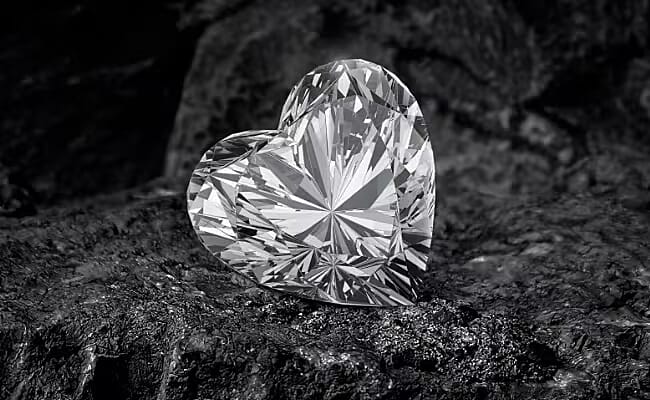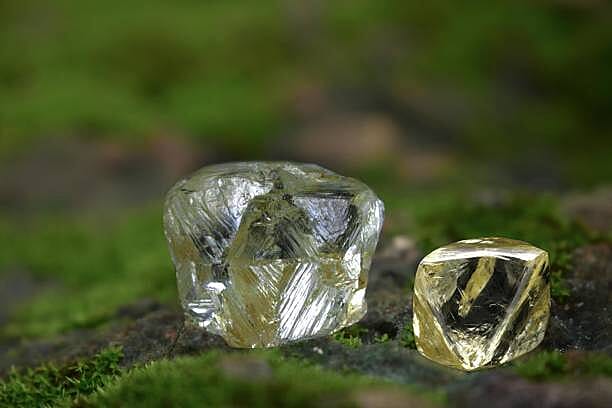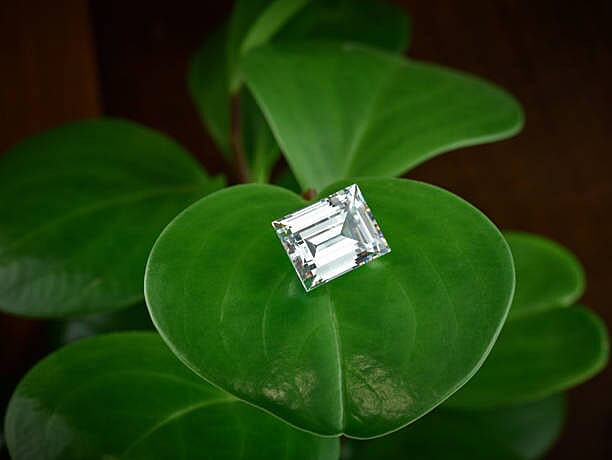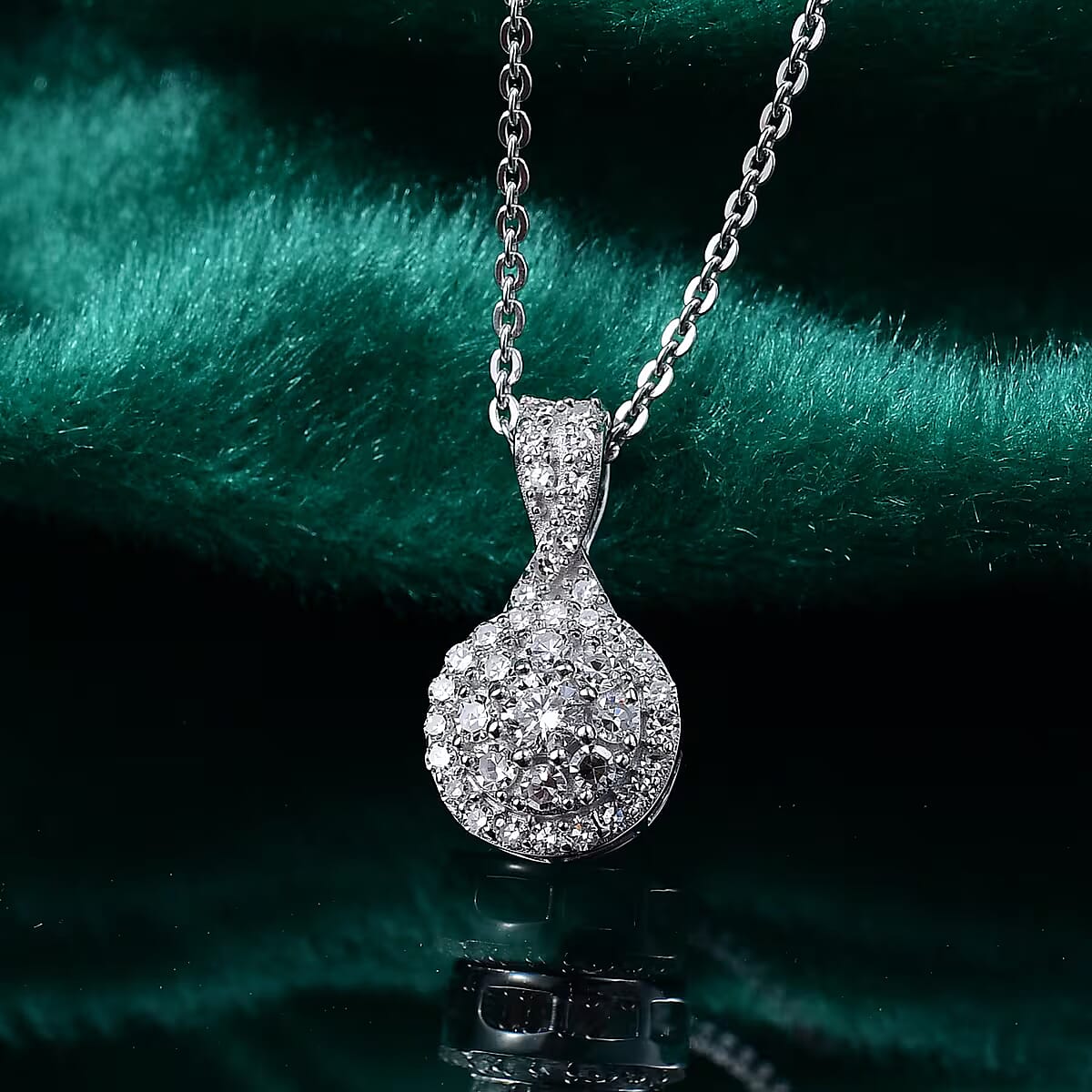
Difference Between Lab Grown Diamond Vs. Natural Diamond
Diamonds have captivated humans for centuries, symbolizing status, luxury, and enduring love. Their extraordinary properties make them unique: composed of pure carbon, diamonds are the hardest natural substance, ranking 10 on the Mohs scale. In the context of lab-grown diamonds vs. natural, their unmatched sparkle, brilliance, and fire set them apart as gemstones.
TABLE OF CONTENTS
1. Lab-Grown vs. Natural Diamonds: What’s Special?
2. Determining Lab Grown Diamonds Vs. Natural Diamonds
3. Treatment of Lab Grown Diamonds Vs. Natural Diamonds
4. Caring for Lab Grown Diamonds Vs. Natural Diamonds
5. Who Can Wear Diamond?
6. How Does Diamond Compare to Other White Stones?
7. Where Does Diamond Come From?
8. Properties of Lab Grown Diamonds Vs. Natural Diamonds
9. Lab Grown Diamonds Facts
10. FAQs
OVERVIEW
Lab-Grown vs. Natural Diamonds: What’s Special?
Natural diamonds, formed deep within the Earth’s mantle over millions of years, are prized for their rarity and timeless appeal. Lab-grown diamonds, created in just weeks using advanced technology, share the same physical, chemical, and optical properties as natural diamonds, making them indistinguishable to the naked eye.
Whether lab grown diamonds vs. natural, diamonds are special for their durability, beauty, and versatility. Lab grown options add value through affordability, ethical sourcing, and environmental sustainability. These factors collectively ensure diamonds remain unparalleled in their significance and allure.
VALUE
Determining Lab Grown Diamonds Vs. Natural Diamonds Value
Color
Natural diamonds are graded for color on a scale from D (completely colorless) to Z (light yellow or brown). Colorless diamonds are the rarest and most valuable. In the context of lab grown diamonds vs. natural diamonds, lab-made diamonds can be created in a variety of colors, including colorless (D-F range), near-colorless (G-J range), and fancy colors like blue, yellow, pink, and green. The controlled growth process allows for precise color manipulation and intensity. Additionally, some diamonds undergo post-growth treatments, such as high-temperature annealing, to enhance or alter their color, often labeled as “color-enhanced”.
Clarity
Clarity measures the presence of internal inclusions or external blemishes. Natural diamonds form under extreme pressure deep within the Earth, often leading to unique inclusions that tell a geological story. Lab grown diamonds, formed in laboratories using techniques like HPHT or CVD, typically have fewer inclusions since the conditions can be managed. This gives lab diamonds a higher chance of achieving better clarity grades at a lower cost compared to natural diamonds.
Cut
The cut refers to how well the diamond has been shaped to reflect light. Both natural and lab-grown diamonds are cut by skilled craftsmen, and the quality of the cut determines brilliance and fire. Since lab-grown diamonds are often produced with fewer inclusions and imperfections, they may allow for a more precise cut. Natural diamonds, depending on their raw form, may present challenges that can impact the cutting process. That said, an expertly cut natural diamond can be just as dazzling as its lab-grown counterpart.
Carat
Carat refers to the weight of the diamond. Lab grown diamonds are more affordable per carat compared to natural diamonds, making it easier to obtain a larger stone for the same price. Natural diamonds, especially those of larger carat weights, are considered rarer and thus command higher prices. While both types of diamonds offer a range of carat sizes, lab diamonds provide a cost-effective way to achieve the look of a substantial, eye-catching stone without the premium associated with natural diamonds.
Diamond Treatments
| Treatment Type | Natural Diamonds | Lab-Grown Diamonds |
|---|---|---|
| Laser Drilling | Removes dark inclusions by drilling tiny channels to lighten or dissolve imperfections. | Not commonly used on lab-grown diamonds. |
| Fracture Filling | Fills cracks with glass-like material to improve clarity; not permanent. | Rarely used, but similar methods may be applied if needed. |
| HPHT Treatment | Alters color by replicating natural diamond-forming conditions; improves or changes color. | HPHT annealing removes discoloration and improves color consistency. |
| Irradiation | Alters or enhances color (e.g., blue, green, pink); often combined with annealing. | Also used for color enhancement, especially for fancy-colored diamonds. |
| Foil Backing | Rare technique used to enhance the apparent color of a diamond. | Not applicable to lab-grown diamonds. |
| CVD Overgrowth | Not applicable. | Adds a layer of diamond material to improve clarity or surface quality. |
| Color Enhancement | Achieved via HPHT or irradiation for more desirable shades. | Achieved via HPHT, irradiation, or annealing to enhance or create vibrant colors. |
| Clarity Enhancement | Fracture filling is used to reduce visibility of internal cracks. | Rarely needed, but similar techniques may be applied if inclusions are present. |
Storage
Caring For Lab Grown Diamonds Vs. Natural Diamonds
A well-known advertising slogan expertly defines a diamond's timeless appeal, icy beauty, and durability. Ranking ten on the Mohs scale of hardness makes diamond extremely resistant to scratching. Their great toughness provides safety against chipping, breaking, or cracking, whether they are lab grown diamonds vs. natural diamonds.
Ultrasonic and steam cleaners are safe for cleaning most diamonds, except those with fissure filling treatment, foil backing, or laser drilling. Excessive heat, formed under conditions of high temperature and high pressure, does not harm the gem.
While diamonds last forever, it is essential to clean diamond jewelry regularly. A simple cleaning procedure keeps diamond jewelry looking great for longer. Use lukewarm water with dish soap and a soft brush to remove dirt. Rinse with fresh, cool water. A dry cloth can soak the moisture and save the sheen of the gemstone.
Diamond is the only stone that can scratch another diamond. So, do not store two pieces of diamond jewelry together. Similarly, avoid storing other gemstone jewelry with diamond as a diamond can cause serious damage. A jewelry box with compartments or soft cloth pouches are excellent homes for this jewelry.

IDEAL CHOICE
Who Can Wear Diamond?
A timeless symbol of love, eternity, and elegance, natural vs. lab grown diamonds remain the most cherished choice for engagement rings and bridal jewelry. Their unmatched brilliance makes them an ideal pick not only for rings and earrings but also for pendants, necklaces, and bracelets, offering versatility that suits any style.
From royals to celebrities, diamonds have long been a staple of high fashion, gracing solitaire rings, dazzling tiaras, and statement bracelets. This radiating gemstone effortlessly complements every color in your wardrobe. Whether it’s a vibrant green, bold orange, deep red, or classic black, diamond jewelry adds the perfect touch of glamour to elevate any look.
Diamonds also carry rich symbolism and tradition. As the traditional gift for a 10th wedding anniversary, they mark milestones with beauty and brilliance, making them a meaningful token of enduring love.
Whether for a grand occasion or everyday elegance, diamonds are the ultimate choice for those who cherish timeless sophistication.
Difference
How Does Diamond Compare to Other White Stones?
When it comes to brilliance, fire, and timeless allure, natural vs. lab-grown diamonds stand in a league of their own. Their colorless charm and dazzling sparkle make them one of the most coveted gemstones in the world. While other white stones like white topaz and Cambodian zircon have their unique appeal, none can truly replicate the unmatched fire and brilliance that diamonds offer.
Lab grown diamonds, composed of pure carbon, are identical to natural diamonds in chemical, physical, and optical properties, offering the same durability and sparkle. On the other hand, cubic zirconia, made of zirconium dioxide, provides a more affordable option but lacks the durability, brilliance, and long-lasting clarity of diamonds, as it can cloud over time.
Moissanite, composed of silicon carbide, is another alternative. While it’s highly durable and even more brilliant than diamonds in some aspects, it lacks the natural authenticity and iconic sparkle that diamonds are loved for. Lab grown diamonds come the closest to natural diamonds, sharing their pure elegance and brilliance, while cubic zirconia and moissanite serve as accessible alternatives with their own distinct characteristics.
Whether natural or lab grown, diamonds remain the ultimate symbol of luxury and brilliance, standing apart from other white stones for their timeless beauty and unmatched fire.


Where Does Diamond Come From?
Diamonds are treasures of the Earth, originating either naturally over billions of years or in laboratories through advanced technology. In the context of lab grown diamonds vs. natural diamomds, natural diamonds are formed deep within the Earth’s mantle under immense heat and pressure. Over time, volcanic eruptions bring these precious stones closer to the surface, where they are mined. Renowned diamond mining locations include South Africa, Russia, Canada, Botswana, and Australia, each producing diamonds with unique characteristics and qualities that contribute to their global allure.
Lab grown diamonds, on the other hand, are a marvel of modern innovation. Using advanced techniques like High-Pressure High-Temperature (HPHT) or Chemical Vapor Deposition (CVD), scientists replicate the natural diamond formation process in a controlled environment. These lab grown diamonds can be created in just a few weeks, offering the same chemical, physical, and optical properties as natural diamonds.
While natural diamonds are revered for their rarity and connection to Earth’s history, lab grown diamonds provide a sustainable and ethical alternative. With their identical composition and brilliance, they offer an eco-friendly choice that appeals to those seeking both beauty and responsibility.
Whether naturally mined or expertly crafted in a lab, diamonds continue to symbolize love, eternity, and the marvels of nature and human ingenuity.
Properties
Properties of Lab Grown Diamonds Vs. Natural Diamonds
What Does Diamond Mean?
A symbol of love and a part of eternity, the diamond is mentioned in various beliefs and myths. In Rome, it was believed that a soldier wearing a diamond on the left arm would be offered courage and protection. In the ancient Hindu culture, diamonds were said to contain the power of lightning. There are also beliefs that diamond possesses metaphysical properties that boost mental health and act as a remedy for poison.
Disclaimer: The information presented is for information purposes only and should not replace the advice of a trained medical professional.
Is Diamond A Birthstone?
According to the modern US birthstone list, diamonds are the modern birthstone of April. While diamond is known for its captivating brilliance, its colored counterparts make for a contemporary birthstone choice.
Read our detailed guide on lab grown diamondsLab Grown Diamond Facts
MOHS HARDNESS
10
COLOR
Colorless, yellow, brown, pink, green, blue.
TREATMENT
Natural diamonds and lab grown diamonds may undergo treatment to enhance color and clarity.
ALSO KNOWN AS
Colored diamonds are known as fancy diamonds

FAQs about natural and lab-grown diamond
Q. Are lab grown diamonds real diamonds?
A. Yes, these diamonds are real diamonds. They have the same physical, chemical, and optical properties as natural diamonds.
Q. How are lab grown diamonds made?
A. They are made using either the High-Pressure, High-Temperature (HPHT) or Chemical Vapor Deposition (CVD) methods, both of which replicate the natural diamond formation process.
Q. How do lab grown diamonds differ from natural diamonds?
A. The main difference is their origin. Natural diamonds are formed deep within the Earth over millions of years, while loose lab-grown diamonds are created in a laboratory over a period of weeks.Q. Are lab grown diamonds cheaper than natural diamonds?
A. Yes, they are typically 30-40% less expensive than natural diamonds of the same quality and size.
Q. Can you visually tell the difference in quality and appearance between lab grown diamonds vs. natural diamonds?
A. No, it is impossible to tell the difference between natural vs. lab grown diamonds with the naked eye. Specialized equipment is needed to distinguish them.
Q. Do lab grown diamonds have inclusions like natural diamonds?
A. Yes, they can have inclusions, though they may differ in type and pattern from those found in natural diamonds.
Q. Are lab grown diamonds environmentally friendly?
A. Yes, they are more environmentally friendly than natural diamonds, as they do not require large-scale mining, which can negatively impact ecosystems.
Q. Do lab grown diamonds require certification?
A. Yes, they are often accompanied by a certification from reputable gemological institutes detailing their quality and characteristics.
Q. Are lab grown diamonds prone to clouding or discoloration over time?
A. No, they do not cloud or discolor over time. They maintain their brilliance and clarity, just like natural diamonds.